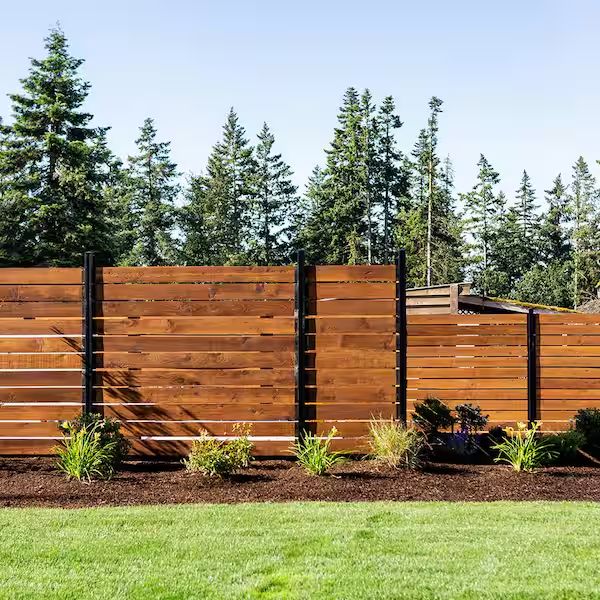Installing a wood fence is a significant home improvement project that enhances privacy, security, and curb appeal. Whether you’re hiring professionals or tackling it as a DIY project, understanding key considerations will help ensure your fence stands the test of time. This guide covers essential factors to evaluate before, during, and after your wood fence installation.

Pre-Installation Planning
Local Regulations and Permits
- Property Lines: Verify your property boundaries with a survey before installation to avoid disputes with neighbors.
- Zoning Laws: Check local regulations regarding fence height, style, and setback requirements.
- Permits: Most municipalities require permits for fence installation; failing to obtain one could result in fines or forced removal.
- HOA Rules: If applicable, review homeowners association guidelines, which may restrict design, height, or materials.
- Utility Marking: Contact local utility companies to mark underground lines before digging (usually through a “Call Before You Dig” service).
Wood Selection
Different wood types offer varying benefits:
- Cedar: Naturally resistant to rot, insects, and warping; offers a pleasant aroma and attractive reddish hue; moderate lifespan of 15-20 years.
- Redwood: Premium option with exceptional rot and insect resistance; beautiful natural color; can last 20-25 years with proper maintenance.
- Pressure-Treated Pine: Affordable and treated to resist rot and insects; greenish tint initially but weathers to honey brown; 15+ year lifespan.
- Cypress: Natural oils provide good resistance to insects and moisture; attractive grain patterns; moderate cost with 15-20 year lifespan.
- White Oak: Extremely durable hardwood with excellent rot resistance; higher cost but exceptional 20+ year lifespan.
Installation Best Practices
Foundation and Structure
- Post Hole Depth: Dig post holes at least 1/3 the height of your fence (minimum 24 inches deep) to provide stability.
- Concrete Footings: Use concrete to secure posts, especially in areas with freeze-thaw cycles or high winds.
- Post Spacing: Space posts no more than 8 feet apart (6 feet is ideal) to prevent sagging between supports.
- Post Size: Use 4×4 posts for fences up to 6 feet tall; 6×6 posts for taller fences or areas with high wind exposure.
- Gate Placement: Consider traffic patterns and install gates in convenient locations with additional structural support.
Hardware and Fasteners
- Galvanized or Stainless Steel: Use corrosion-resistant fasteners to prevent rust streaks and structural failure.
- Proper Screws/Nails: Choose ring-shank nails or deck screws specifically designed for exterior wood applications.
- Metal Brackets: Consider using metal post brackets to keep wood posts from direct ground contact, extending fence life.
- Gate Hardware: Invest in quality hinges, latches, and handles rated for exterior use and appropriate for the gate’s weight.
Post-Installation Considerations
Weather Protection
- Sealant Application: Apply a quality wood sealer 30-60 days after installation (after wood has dried properly).
- Staining Options: Consider semi-transparent stains that protect while showcasing wood grain.
- Weather Timing: Install during dry weather if possible to allow wood to acclimate properly.
- Drainage Planning: Ensure proper drainage around fence posts to prevent water accumulation.
Maintenance Schedule
- Annual Inspection: Check for loose boards, protruding nails, and signs of rot each spring.
- Cleaning: Power wash gently every 1-2 years to remove mildew and dirt.
- Resealing: Apply new sealant every 2-3 years depending on climate and exposure.
- Prompt Repairs: Address minor issues quickly before they become major problems.
Common Installation Pitfalls to Avoid
- Inadequate Post Depth: Shallow posts will lead to leaning or toppled fences.
- Improper Spacing: Too much distance between posts causes sagging and warping.
- Using Untreated Wood in Ground Contact: Even naturally resistant woods will eventually rot when in direct soil contact.
- Ignoring Terrain Changes: Failing to adjust for slopes creates awkward transitions and gaps.
- Skipping the Sealing Step: Unprotected wood will weather much faster and develop cracks and warping.
Final Thoughts
A well-installed wood fence is an investment that can last decades with proper planning and maintenance. By focusing on quality materials, sound structural techniques, and appropriate finishing, you’ll create a beautiful, functional boundary that enhances your property’s value and enjoyment. Whether working with professionals or tackling the project yourself, attention to these details will help ensure your wood fence stands strong for years to come.